Release Date : December 2, 2022
Developer(s) : Striking Distance Studios
Publisher(s) : Krafton
Platforms : PS4, PS5, Xbox One, Xbox Series X/S, PC
The Callisto Protocol is considered the spiritual successor to Dead Space by many people, despite the fact that a remake of the latter is due in just a few more weeks, and has succeeded in raising a quite surprising hype level. While the three main episodes in the series from Visceral Games and Electronic Arts have been far from commercial failures, they haven’t exactly been blockbusters. In fact, Glen Schofield and his team’s work on the first two installments has acquired cult status over the years. So the news that the man was once again working on a horrific experiment in space was bound to upset some people.
And while Glen Schofield wishes Dead Space Remake all the best, his new project seems determined to hit hard, perhaps even harder than his previous productions. Now at the head of Striking Distance Studios, a company attached to Krafton, who are responsible for PUBG, the creative director has clearly been given complete freedom on his new project, which has always claimed an abusive use of hemoglobin, and a horror-level beyond suggestion. Promises that, like everyone else, we wanted to believe in. But now that we’ve finished playing the game, it’s time for our own review.
Table of Contents
Dead Space 2
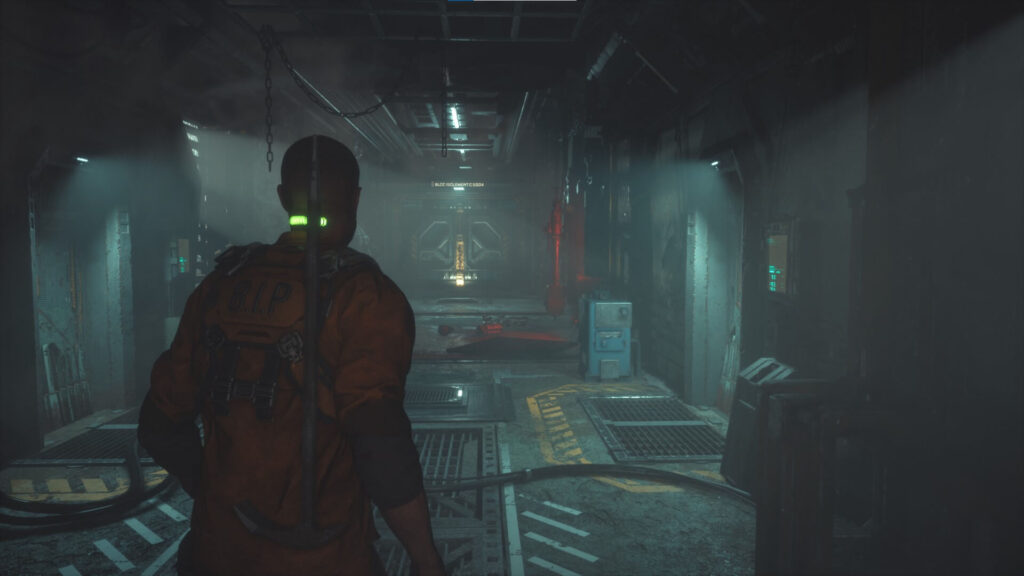
Ever since The Callisto Protocol was announced at the Game Awards 2020, the press has been comparing it to Dead Space, and we’re certainly no exception. The parallels between the two productions are obvious. Firstly, because Mr. Schofield is in charge, of course. But also because his new project makes no secret of its inspirations, which are mostly the same as for the 2008 game. Here and there, you’ll find Alien, Event Horizon, and The Thing. And on the video game front, Resident Evil 4 is not far off, of course.
Our first few minutes in the game didn’t make us think otherwise. The introduction is very well done, with excellent character modeling and animations. Jacob Lee, the protagonist, is accompanied by his second-in-command on his ship bound for Callisto, one of Jupiter’s moons. However, this routine mission turns deadly when a team of pirates breaks into the cargo ship through the hold. Then, after a few minutes and a forced landing, Jacob wakes up next to the corpse of his colleague, on the ground of a very hostile celestial surface.
Jacob barely has time to regain his senses before he’s taken, along with the last surviving pirate, by the security forces of Callisto’s only infrastructure: Black Iron. An ultra-high-security prison where unpleasant guards rub shoulders with menacing humanoid robots. You’re quickly informed that you can no longer count on your freedom, as the complex’s director has decided to take you prisoner without a trial, even though you’re obviously in the clear. But your pleasant stay in this dark cell will be short-lived.

Shortly after your incarceration, the prison suffers an emergency. As you open your cell door, you notice that the corridors are covered with corpses, and that some of the guards and prisoners have been transformed into deformed, highly aggressive creatures. And right from the start, it’s obvious. If you’ve already played Dead Space, or any of its sequels, you’ll be on familiar ground with The Callisto Protocol. Because its key mapping is virtually the same as that of the 2008 game, and there’s an in-game HUD, with the protagonist’s life displayed on his neck. Ultimately, the changes are simply designed to improve ergonomics.
Above all, Jacob weighs a lot. His movements are slow, he struggles to turn around, and the camera on his back doesn’t offer ideal peripheral vision. The legacy of Dead Space, and more generally Resident Evil 4, is felt. And on these points, it seems reasonable to compare Jacob Lee’s adventures to Isaac Clarke’s. The same goes for the structure of the adventure, a true linear flight forward that is immensely reminiscent of Dead Space 2 in its unfolding, and even in its action orientation, in a way. You’d almost expect the same physics management.
The Warriors
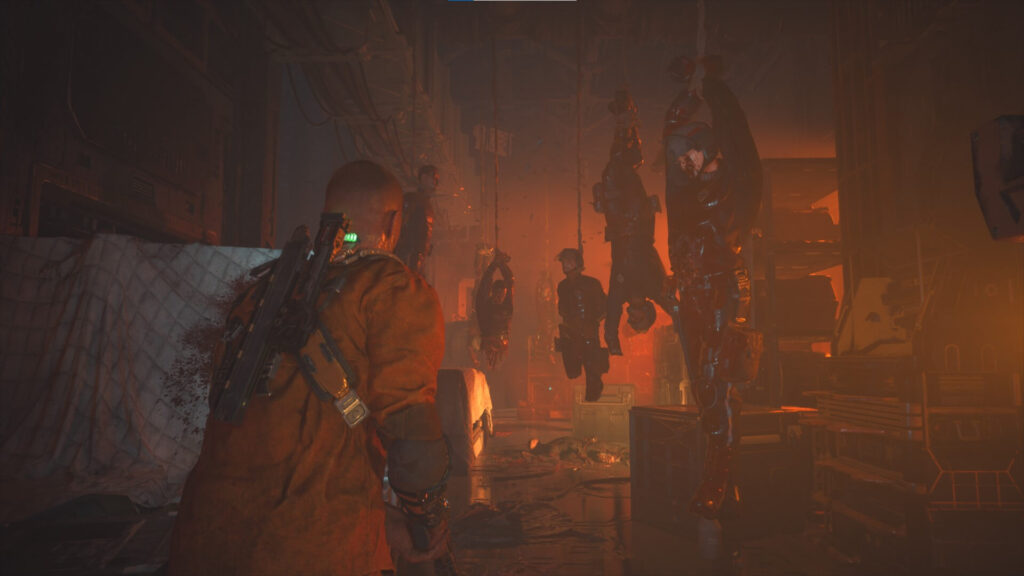
In many aspects, The Callisto Protocol bears a strong resemblance to Visceral Games’ late game. In fact, as we wandered the bloody corridors of Black Iron, we had the sensation of playing a game from another time. Because Striking Distance’s first game is definitely old school. And that’s not a bad thing, by the way. Mainly because there haven’t been many experiences like this in the last ten years. And if anyone mentions Dead Space 3 to me, I’ll make them swallow their insolence immediately!
The adventure is quite linear, and never really gives the impression of giving us a bit of freedom. But this is quickly forgotten, as the fast-paced combat is interspersed with atmospheric sequences, effectively diluting the story. The story has no great ambitions and proves to be fairly predictable, but features strong characters portrayed by actors who are clearly committed to the project. In short, we’re never really surprised by The Callisto Protocol, and that’s perhaps its biggest flaw.
The main difference between The Callisto Protocol and Dead Space 2 lies in hand-to-hand combat. Because, like Half-Life, it takes a while to get your first firearm, and you have to use whatever you can get your hands on. Here, an electric baton ripped from the corpse of a guard. And get used to it, The Callisto Protocol is much less a shooter than the titles that inspired it. It combines everything that makes up a TPS, but with an emphasis on close-quarters combat and, occasionally, a low-key approach.
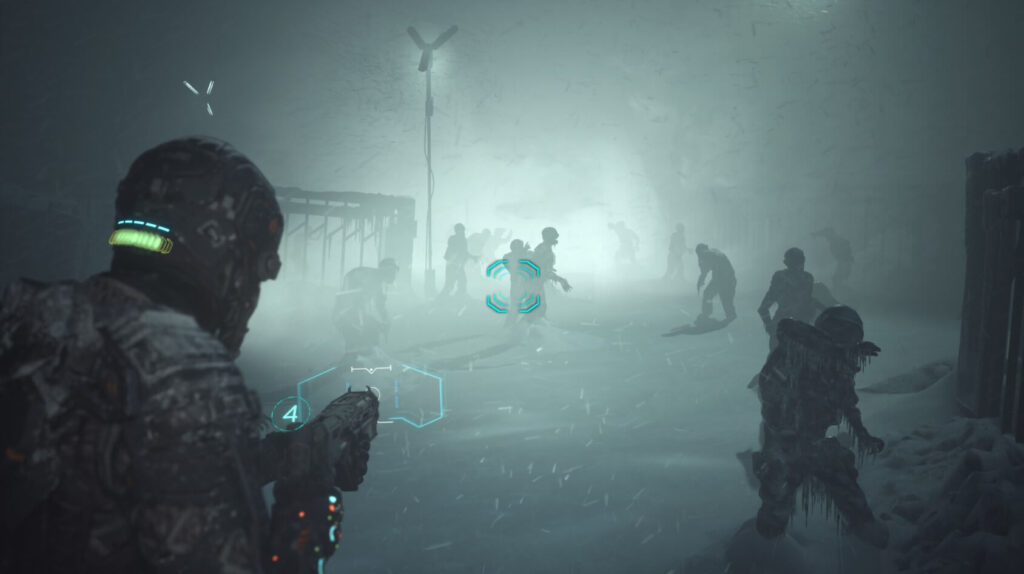
Trigger-happy fans can rest assured that The Callisto Protocol is not entirely gun-free. It does, of course, offer little in the way of ammunition, and players quickly get the chilling impression of being in a constant state of flux. Hand-to-hand combat is therefore the order of the day… and the enemies don’t leave much choice, as they are pretty bullet-resistant, but above all highly mobile. These close-quarters battles don’t allow for a plethora of different moves, but easily involve the player thanks to their nervousness and the challenge they impose. You can dodge attacks like a Steve in Tekken 7, without the speed, but the slightest mistake is deadly.
In fact, the first few battles can be a little frustrating, until you get the hang of the dodging and parrying system, which requires only the left joystick. Unfortunately, The Callisto Protocol often confuses challenges with inflexibility. You’re quickly knocked down by an enemy who’s a little angrier than the rest, and the presence of more than one opponent immediately imposes a certain tension, at least for a good half of the adventure. After that, the interesting mutation system takes over in the stress and difficulty category. But checkpoints are not always well placed…
Cold Fear
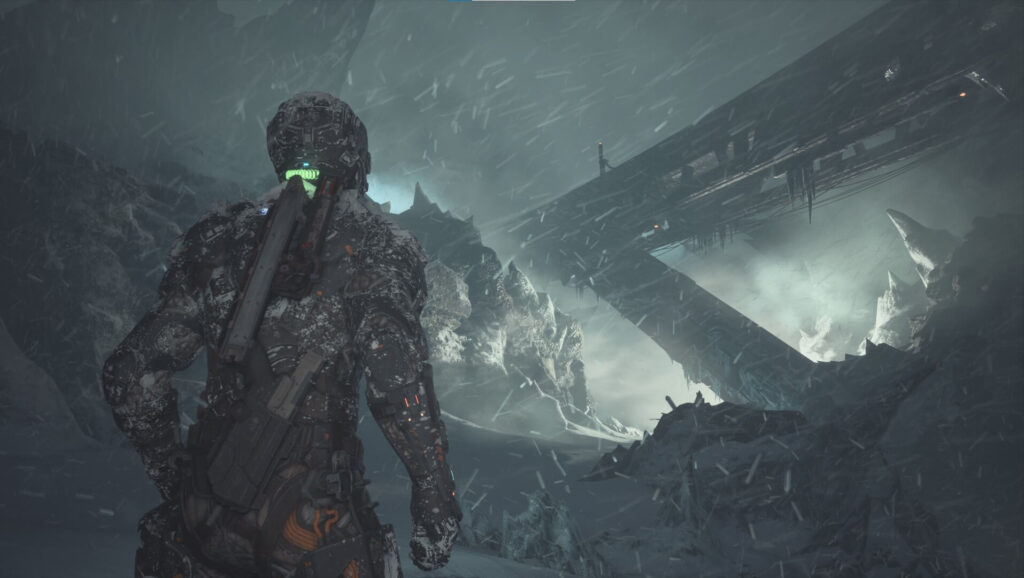
Finally, the greatest quality of The Callisto Protocol remains its atmosphere. Once on board, players experience a range of emotions, from dread and fear to relief. Sometimes, the fighting can be quite thrilling, and at a certain point, it opens up some interesting possibilities. Hand-to-hand combat, of course, but also firearms with secondary firepower (present in very limited numbers), and telekinesis. You can quickly pick up a tool that enables you to lift objects or enemies to bring them closer to you, or throw them. This can sometimes be used to contain a wave, or to instantly eliminate a threat.
Of course, a great deal of effort has been put into sound design, with frightening noises coming from all sides. Still, we’d have liked it to be a little less timid and more subtle, but also to give more prominence to silence, which can sometimes be far more frightening. In short, we’d have liked the game to take its time a little more, offer more enemy-free passages, and play more wisely with the player. As it is, the adventure is very pleasant to follow, but everything is scripted, as in a 2008 game. For some, this might not work as well as it does for others.
As far as I’m concerned, having replayed Dead Space and its sequel recently to write about them in our articles, I rarely felt in danger outside of combat. And that’s a pity, because I have the impression that the title is designed to speak to me, and to all those who have enjoyed Visceral Games’ titles, but by remaining too conventional it simply fails to reach its target. It’s a very personal reflection, I agree, and somewhere I sincerely hope I’m the only one to feel this way. Because The Callisto Protocol does good where it goes, despite a few recurring problems.
These include the very average, reused bosses, and especially the occasionally poor level design. The game manages to create a sense of adventure by renewing its scenery, aided by compelling visuals. But it loses its way when it comes to level design. We’re constantly on the move in cramped corridors, even crawling through a thin crack in a wall, or crawling through ducts. It may not seem like it, but it’s important to realize that these phases add nothing to the overall scenery, which is otherwise quite successful, and are actually a little too much like loading times in disguise.
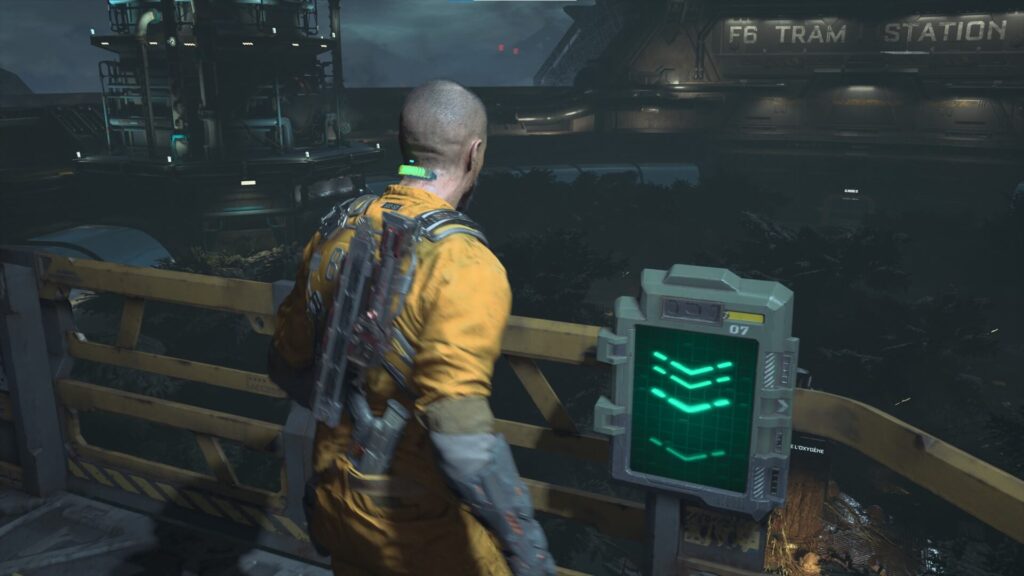
Finally, a few small details. For a start, there are vending machines that act as stores and workbenches for upgrading equipment. It’s simple and effective, but above all, it prevents the game from trying too hard in terms of depth. Chests are scattered throughout the levels, regularly offering useful items. Again, it’s simple, but on this occasion, we’d have preferred it to be a little more subtle, because it’s not really implemented, and even detracts from the immersion. The Callisto Protocol doesn’t offer a New Game+, which is a shame, because it’s not really long and would have fitted in well with this type of mode. Finally, during our play-through, we experienced one game crash, which forced us to restart the game.
Conclusion
The Callisto Protocol is definitely an old-school experience which, visuals aside, would have been perfectly suited to Xbox 360 and PlayStation 3, but never really surprises, and ends a little too quickly. However, to sum up, Striking Distance’s first game in this way would be short-sighted. Because it’s a well-paced TPS, quite captivating despite its somewhat predictable scenario, generous in its staging and situations, deeply violent, and manages to offer a few memorable passages. In short, The Callisto Protocol isn’t the smash hit some people were hoping for, but it’s still an honest game that has everything it takes to please horror, action, and sci-fi fans.
